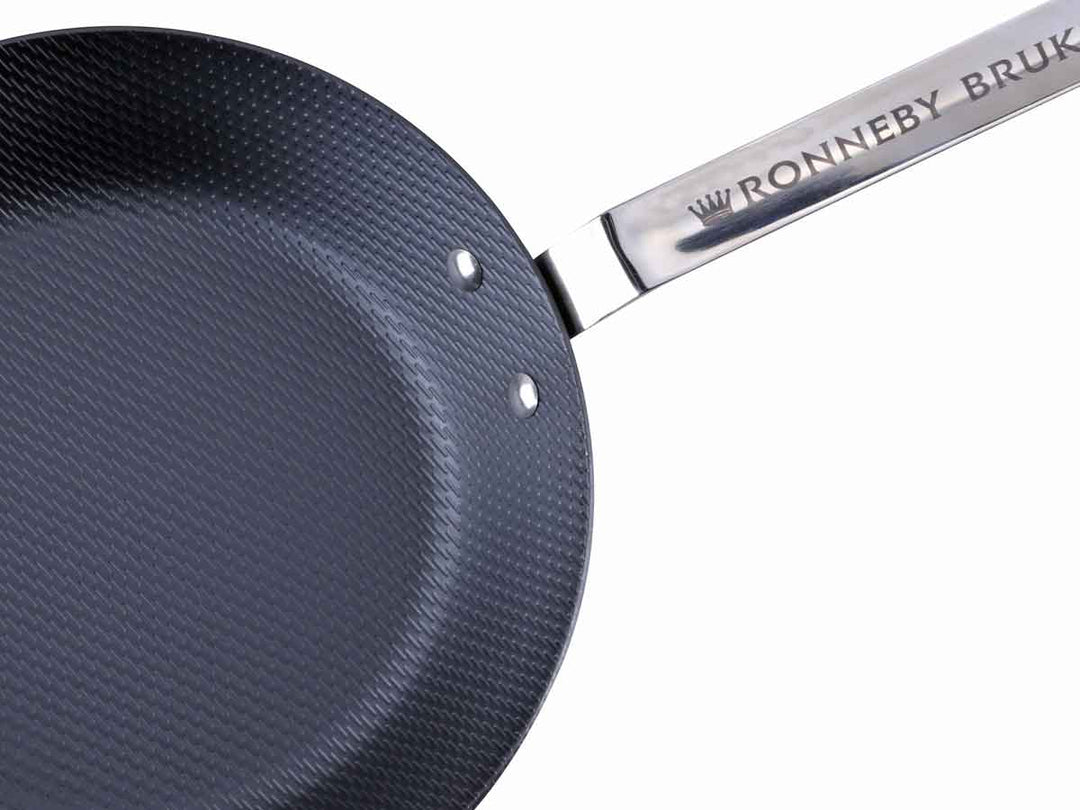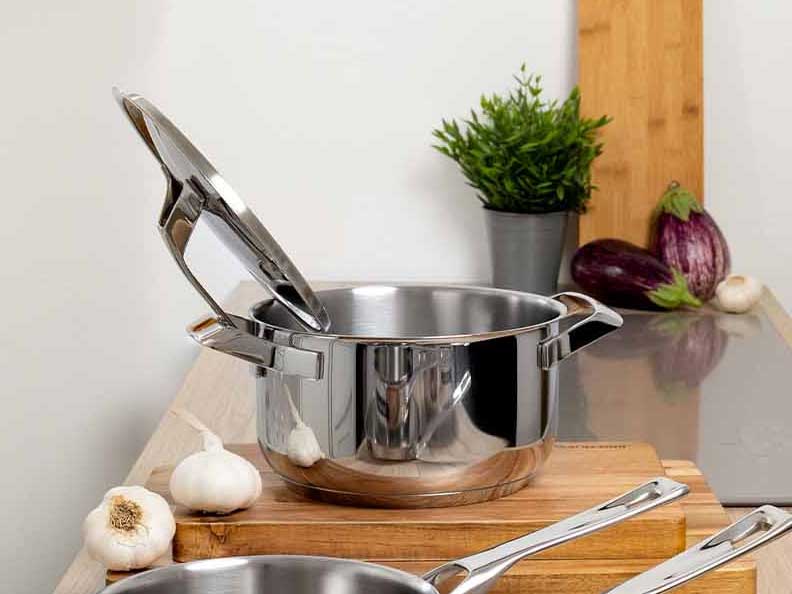stainless steel
Stainless steel is an extremely popular material for the manufacture of cookware, and in many areas stainless steel has replaced the materials previously used to some extent.
What is stainless steel?
Stainless steel is the name given to steel alloys that have a high resistance to corrosion (rust) due to the addition of certain alloy components. It is mainly chromium that protects the iron contained in the steel from rusting by forming a thin oxide layer that is invisible to the human eye.
Stainless steel is not just stainless steel
There are a variety of different stainless steel alloys, each with specific properties, advantages and disadvantages. The most suitable type of stainless steel for cookware is an alloy with 18% chromium and 10% nickel, which is therefore usually referred to as 18/10 stainless steel and has very good resistance to the stresses and chemical attacks that usually occur during cooking.
Note: Since 18/10 stainless steel is not ferromagnetic and therefore not suitable for induction, the base capsule (i.e. the area where the stove stands) is made of a different stainless steel alloy, eg ferromagnetic stainless steel 18/0, for 18/10 cookware suitable for induction.
Since the price of nickel has exploded in recent years, stainless steel alloys with a much lower nickel content are often used, especially for cheaper cookware. Unfortunately, these are often less resistant to chemical attack such as salt corrosion (see below).
Advantages of stainless steel cookware
+ rustproof
+ easy to care for
+ scratch-resistant (if without coating)
+ very durable
+ moderate weight
+ also suitable for very hot roasting or flambéing (if not coated)
Disadvantages of stainless steel cookware
- no non-stick effect, food can attach / stick
- Danger of pitting corrosion, especially in pots, if cooking salt is added to cold water
- Not suitable for people with extreme nickel allergies
Meat sticks in stainless steel pan
Stainless steel without a coating has no non-stick effect. When searing meat, it is therefore normal for it to initially stick to the uncoated stainless steel (even if you use plenty of cooking fat). All you then need is just a little patience: as soon as a nice crust has formed on the meat (Maillard reaction), it comes off almost by itself and can be lifted from the surface and turned over without any problems. Do not put too much meat in the pan at once, so that it does not cool down so much and the meat does not stew in the released meat juice instead of frying.
What is stainless steel cookware not suitable for?
Uncoated stainless steel pans are less suitable for frying food that tends to stick or tear apart easily (pasta, potatoes, breaded dishes, egg dishes, tender fish fillets, meat with a lot of viscous marinade) or require a very skilled hand.
Can stainless steel rust?
In principle, the chromium oxide layer protects the iron in the stainless steel so that it does not rust. However, under unfavorable circumstances, stainless steel can also develop traces of rust. Most of the time, these are transferred iron/rust particles from another non-stainless steel item. This can happen, for example, in the dishwasher. Such superficial traces of rust can be removed by polishing.
Stains or holes in stainless steel?
There's one thing stainless steel doesn't like at all: high concentrations of table salt! Why? Stainless steel is sensitive to high chloride concentrations, including sodium chloride, NaCl = common salt.
CAUTION: Never put salt in cold water!
Table salt (sodium chloride NaCl) dissolves much more slowly in cold water, sinks to the bottom and, due to the high concentration, can cause stains (light spots) or even surface pitting (dark spots) on the bottom of the cookware! Therefore, in a stainless steel pot or roaster, always add the table salt to the boiling water first, never to the cold!







